Shoulder instability can be a subtle and frustrating condition, often mistaken for general soreness or muscle fatigue. But when left untreated, it can lead to chronic pain, limited function, and repeated dislocations. Knowing what signs to look for is crucial for early detection and effective treatment. Whether you’re an athlete, a physically active individual, or someone with a history of joint issues, understanding the symptoms of shoulder instability can make a significant difference in your recovery journey.
What Is Shoulder Instability?
The shoulder is a ball-and-socket joint with remarkable flexibility. However, this flexibility comes at the cost of stability. When the tissues that support the joint—such as the ligaments, labrum, and rotator cuff—are weakened or damaged, the head of the upper arm bone (humerus) can slip out of its socket, either partially or completely. This condition is referred to as shoulder instability.
Common Symptoms of Shoulder Instability
1. A Sensation of the Shoulder “Slipping Out”
One of the hallmark signs is the feeling that your shoulder is about to pop out—or has popped out—of place. This might occur during overhead movement, when lifting objects, or even during sleep.
2. Frequent Dislocations or Subluxations
Repeated episodes of the shoulder coming out of socket (dislocation) or partially slipping out (subluxation) strongly indicate an unstable shoulder. These events may happen with less and less force over time.
3. Persistent or Recurrent Shoulder Pain
Pain can present itself in various ways, including:
- A dull ache deep in the shoulder
- Sharp pain during specific movements
- Lingering discomfort after activity
This pain is usually due to irritation or damage to the surrounding soft tissues.
4. Weakness in the Shoulder or Arm
People often report reduced strength when lifting or rotating the arm. Everyday tasks like lifting groceries, reaching overhead, or pushing open a door can become difficult.
5. Limited Range of Motion
Instability can cause stiffness or apprehension with movement. You might notice:
- Difficulty reaching behind your back or overhead
- Hesitation or fear of certain positions (e.g., throwing)
This may not be due to tightness, but rather the subconscious avoidance of positions that could cause a dislocation.
6. Clicking, Popping, or Catching Sensations
Sounds or sensations in the shoulder joint during movement may be a result of damaged cartilage, labral tears, or loose bodies within the joint—all common in unstable shoulders.
How Symptoms May Differ by Type of Instability
| Type of Instability | Symptom Pattern |
| Anterior | Shoulder slips forward, pain with throwing or pushing |
| Posterior | Discomfort during pressing motions, internal rotation limitations |
| Multidirectional | Shoulder feels loose in multiple directions, frequent subluxations |
When to Seek Medical Attention
If you notice any of the symptoms above—especially after a known injury or a dislocation—it’s important to consult a medical professional. Early intervention can prevent long-term damage and chronic instability.
Signs that require prompt evaluation include:
- A visible deformity or dislocated joint
- Numbness or tingling in the arm or fingers
- Pain that persists beyond a few days or worsens with activity
Why Early Recognition Matters
Catching shoulder instability early can lead to better outcomes. With prompt diagnosis and a personalized treatment plan, most people can return to normal activity levels without needing surgery.
Delaying treatment, on the other hand, can lead to:
- Chronic pain
- Recurrent dislocations
- Increased risk of rotator cuff or labral tears
- Reduced athletic performance
Frequently Asked Questions
1. How can I tell if my shoulder is unstable versus just sore?
Instability is often marked by a feeling of looseness, slipping, or repeated subluxations, while general soreness tends to resolve with rest and is not linked to structural dysfunction.
2. What causes the clicking or popping in my shoulder?
These sounds can result from joint instability, labral tears, or friction between tendons and bones. A clinical exam and imaging can clarify the cause.
3. Can instability happen without a traumatic injury?
Yes. People with naturally loose joints or those who perform repetitive overhead movements are at risk for non-traumatic instability.
4. Will symptoms improve with rest alone?
Rest may temporarily reduce symptoms, but instability often requires strengthening exercises or medical intervention for lasting relief.
5. What kind of doctor should I see for shoulder instability?
An orthopedic specialist—especially one focused on shoulder and sports injuries—is best equipped to diagnose and treat shoulder instability.
